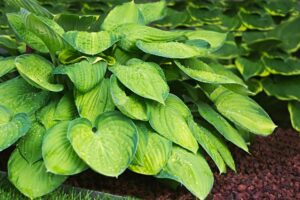On this page, we will explore a selection of remarkable large succulents, each possessing its unique characteristics and care requirements. Prepare to embark on a journey through some of the most fascinating large succulent species!
Fox Tail Agave (Agave attenuata)
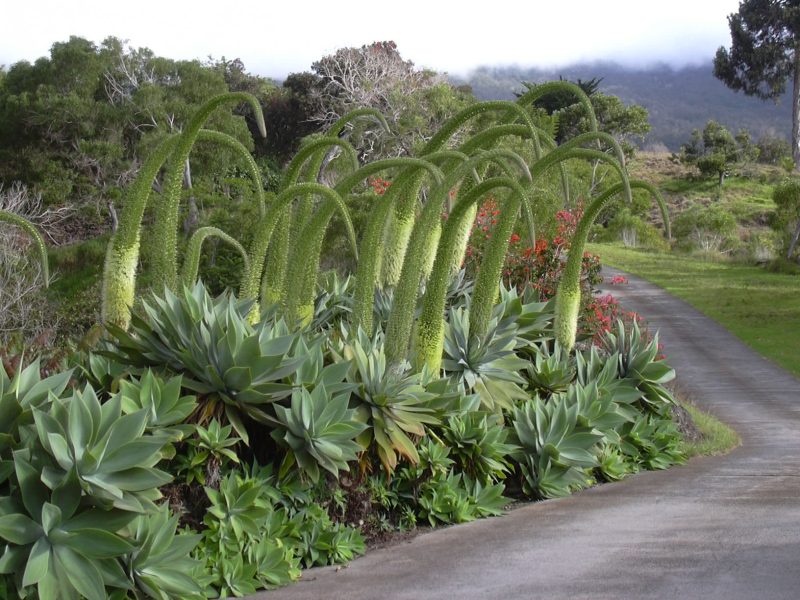
The Fox Tail Agave, or Agave attenuata, is adored for its elegant, arching leaves that resemble the tail of a fox. This stunning succulent can grow anywhere from three to six feet tall and produces a tall flower spike that can reach up to twelve feet, adorned with vibrant yellow-green flowers.
This agave species is native to Mexico and prefers well-draining soil and full sunlight. Unlike many agaves, the Fox Tail Agave lacks teeth along its leaf margins, making it more user-friendly for those who want a striking succulent without the worry of prickly edges.
One of the most appealing aspects of the Fox Tail Agave is its striking silhouette, which adds a sculptural element to any garden. Gardeners appreciate its drought tolerance and low maintenance needs, as this agave thrives in dry conditions, making it a great addition to sustainable landscaping.
African Milk Tree (Euphorbia trigona)

The African Milk Tree, scientifically known as Euphorbia trigona, is a spectacular succulent native to Central Africa. Known for its upright growth habit, this succulent can reach heights of up to six feet, making it a striking accent plant in any home or garden. The plant’s distinct three-sided stems are adorned with prominent ridges, which are often lined with small, sharp spines.
The African Milk Tree flourishes in bright, indirect sunlight and thrives in well-draining soil. It is an ideal candidate for a sunny windowsill or conservatory, where it can draw in radiant light. While it is relatively easy to care for, caution should be exercised due to its milky, white sap, which is toxic and can cause skin irritation.
Beyond its beauty, the African Milk Tree symbolizes resilience in many cultures and is frequently associated with hope and strength. It can be propagated easily through cuttings, allowing enthusiasts to share its beauty with friends and family.
Candelabra Spurge (Euphorbia ammak)
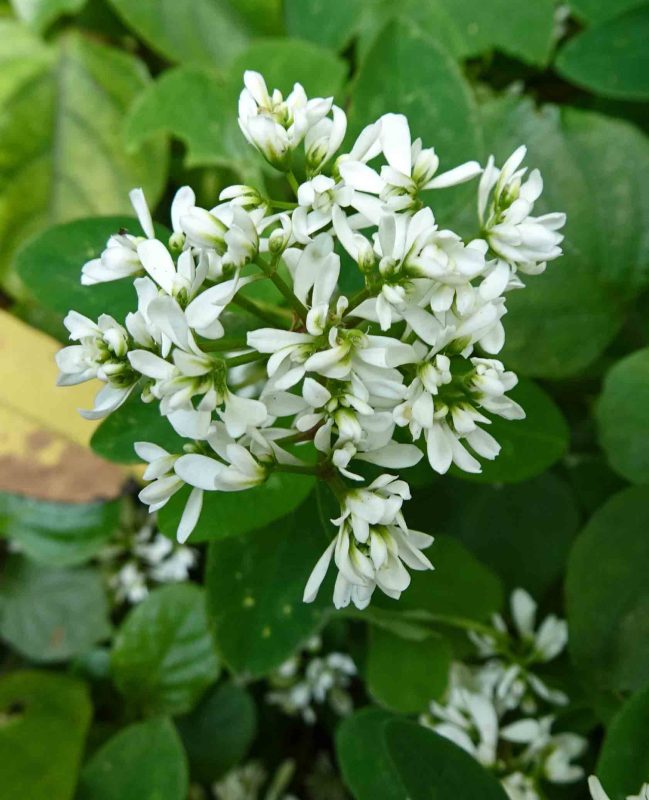
The Candelabra Spurge, or Euphorbia ammak, is a large succulent native to Ethiopia and other parts of East Africa. Renowned for its towering height, it can reach up to 15 feet when growing in the right conditions. Its dark green, columnar stems are segmented like a candelabra, giving it a truly dramatic appearance.
To cultivate the Candelabra Spurge successfully, it requires full sun and well-draining soil. Like the African Milk Tree, it has a toxic sap, and care should be taken during pruning or handling. This majestic succulent is also drought-tolerant, making it a fantastic option for xeriscaping projects.
When planted outdoors in suitable climates, the Candelabra Spurge produces small yellow-green flowers that appear in clusters, adding a touch of color to its architectural silhouette. This plant not only offers visual appeal but also serves as a conversation starter for visitors who admire its unusual form.
Desert Rose (Adenium obesum)
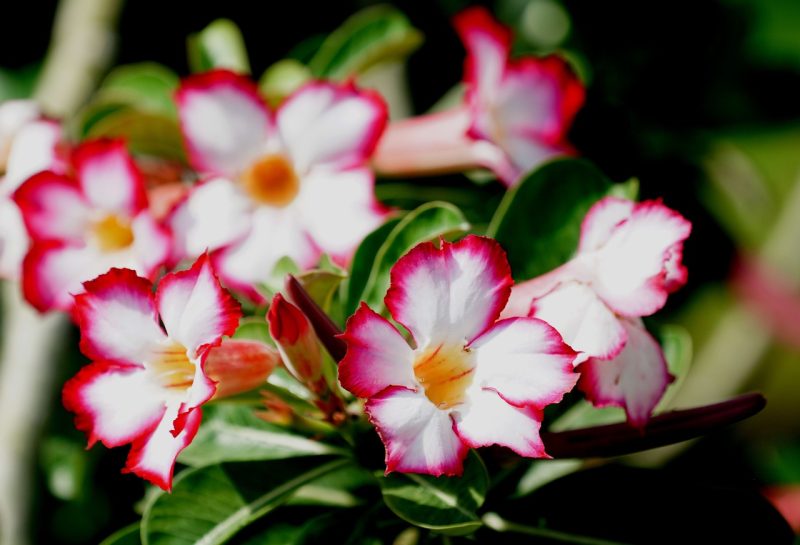
The Desert Rose, known scientifically as Adenium obesum, dazzles with its thick, swollen trunk and vibrant blossoms that can range from pink to white. This succulent is native to the Arabian Peninsula and parts of Africa, where it thrives in harsh environments. Its unique shape resembles a bonsai, making it a popular choice for southwestern themes.
Growing a Desert Rose requires well-draining soil and plenty of sunlight, ideally six hours a day. Its water needs are minimal, but it’s essential to feed it appropriately during its growing season to encourage prolific flowering. With sufficient care, this succulent can reach up to three feet tall, showcasing stunning blooms during warmer months.
In addition to its breathtaking beauty, the Desert Rose is often associated with resilience and adventure, representing the ability to thrive in adversity. This makes it an ideal gift for those who appreciate its hardy spirit, as it flourishes even under the toughest conditions.
Jade Plant (Crassula ovata)
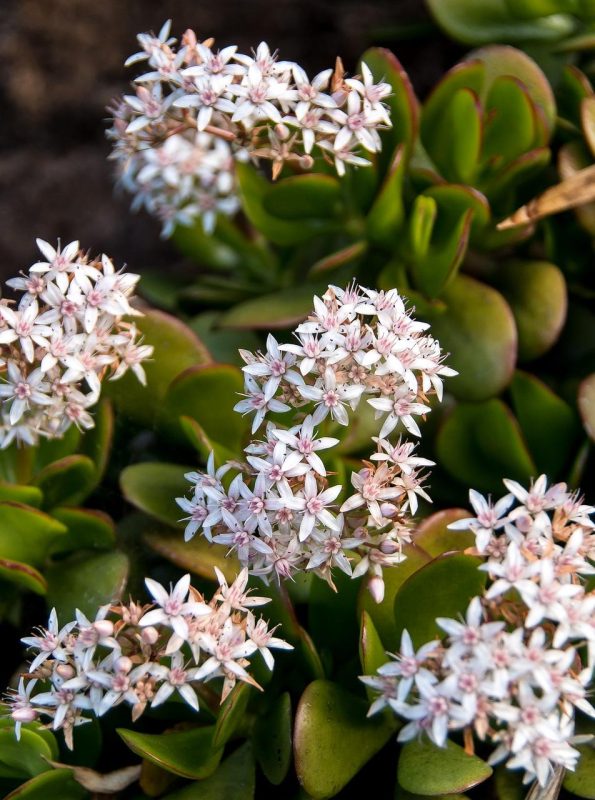
The Jade Plant, scientifically known as Crassula ovata, is one of the most recognized succulents, cherished for its thick, rounded leaves that resemble jade coins. This popular houseplant can grow into a substantial shrub, reaching heights of three to five feet, with a stout trunk that gives it character and presence.
Caring for a Jade Plant is relatively straightforward. It prefers bright sunlight but can adjust to lower light conditions. The key is to let the soil dry out completely between waterings to avoid root rot. The Jade Plant is also known for its longevity, with many being passed down through generations as a symbol of prosperity and good fortune.
One fascinating aspect of the Jade Plant is its ability to be shaped through pruning, allowing individuals to create their own unique forms. With minimal effort, it can become a statement piece in a home or office, radiating positivity and vibrancy.
Joshua Tree (Yucca brevifolia)
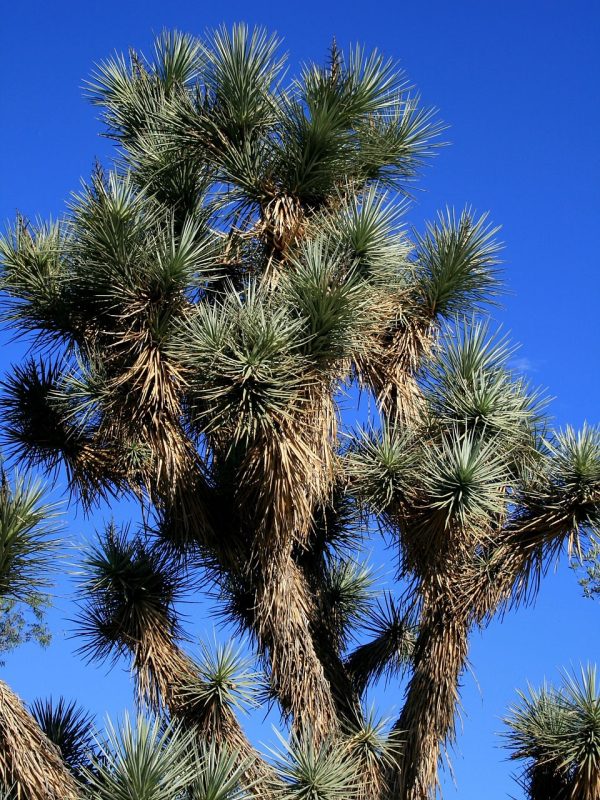
The Joshua Tree, scientifically referred to as Yucca brevifolia, is a unique large succulent that has become synonymous with the American Southwest. Characterized by its spiky leaves and unusual branching structure, this tree-like succulent can reach heights of up to 40 feet. Its iconic silhouette against the desert skyline is truly awe-inspiring.
Joshua Trees thrive in arid environments and prefer full sun, making them ideal for dry landscape designs. They are well-suited to challenging conditions, storing water in their sturdy trunk and deeply extending roots. Interestingly, these succulents produce clusters of cream-colored flowers during spring, attracting pollinators like bees and moths.
The cultural significance of the Joshua Tree cannot be overstated — often seen as a symbol of endurance, its presence creates a sense of wonder in desert settings. This unique succulent thrives in well-draining soil and can be a focal point in desert gardens.
Madagascar Palm (Pachypodium lamerei)
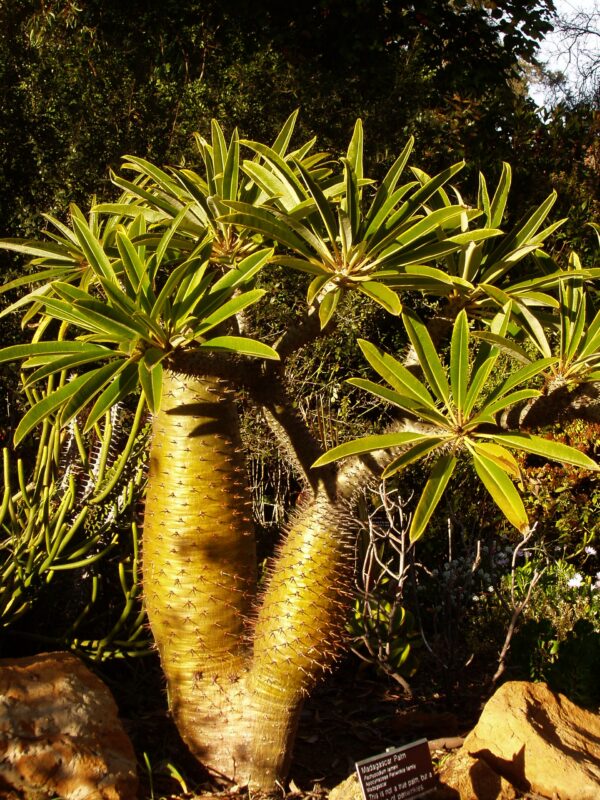
The Madagascar Palm, or Pachypodium lamerei, is a large succulent that can resemble a small palm tree. This stunning plant has a swollen, trunk-like base and can grow up to ten feet tall. Its glossy, dark green leaves crown the top, providing an elegant architectural element to any garden or indoor setting.
This succulent is native to Madagascar and thrives in full sun with well-draining soil. It’s crucial to allow the soil to dry out between waterings, similar to many succulents. The Madagascar Palm can produce fragrant white flowers in the summer if given the right conditions, adding a delightful sensory experience to its aesthetic appeal.
A fascinating characteristic of the Madagascar Palm is its ability to store water in its trunk, allowing it to survive periods of drought. By nurturing a Madagascar Palm, gardeners can enjoy a piece of tropical paradise while supporting the preservation of Madagascar’s unique flora.
Mother of Millions (Kalanchoe daigremontiana)
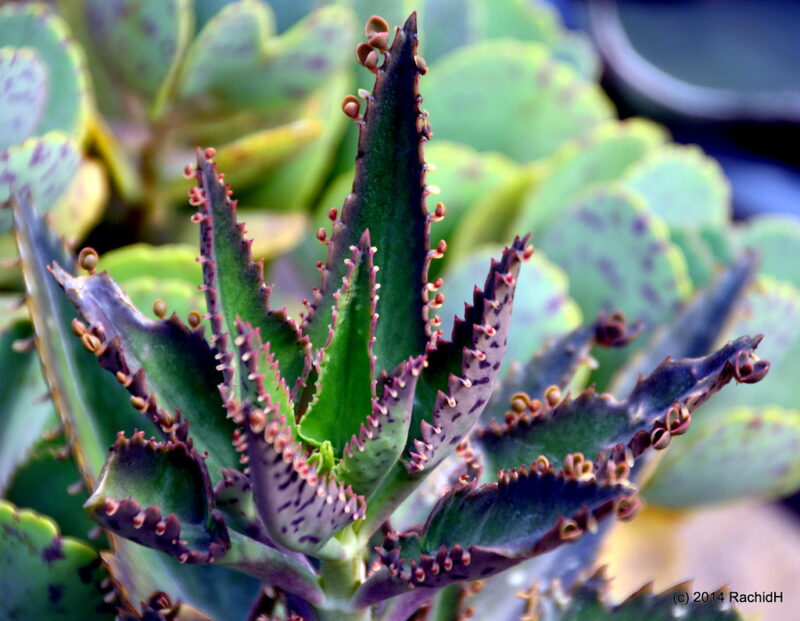
The Mother of Millions, scientifically known as Kalanchoe daigremontiana, is famous for its prolific propagation. This succulent can reach about three feet and is characterized by its unique leaves that produce tiny plantlets along their edges. With its vibrant green foliage and distinctive growing habit, the Mother of Millions is a breathtaking specimen.
This succulent thrives in bright, indirect sunlight and prefers well-draining soil. It has moderate water needs — allowing the soil to dry out between waterings is crucial for its maintenance. As a highly adaptable plant, the Mother of Millions can grow in various environments, making it a popular choice for home gardens.
While beautiful, this succulent can also be invasive in certain climates due to its prolific reproduction. It’s recommended to monitor its growth to keep it contained. With care, the Mother of Millions can bring joy and conversation to any succulent collection.
Ocotillo (Fouquieria splendens)
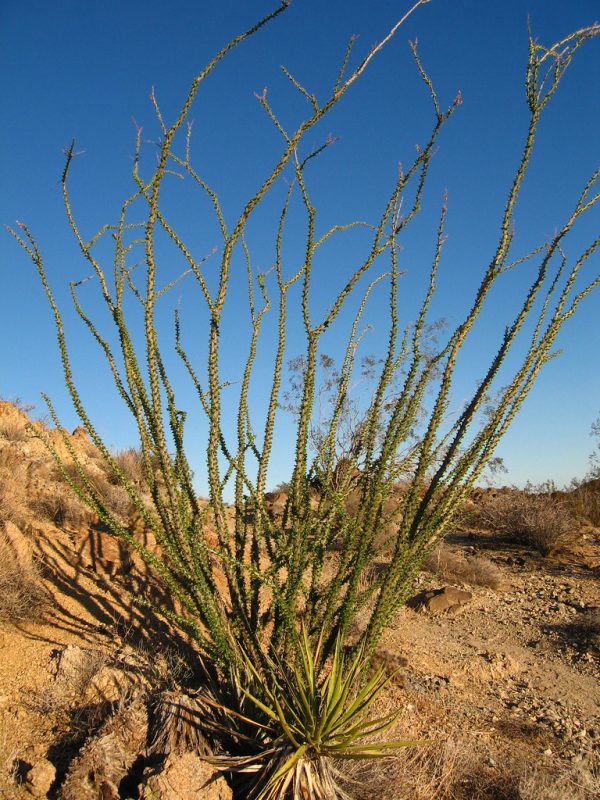
The Ocotillo, or Fouquieria splendens, stands out with its long, spindly stems that can reach up to 20 feet in height. Native to the southwestern United States and northern Mexico, this remarkable succulent has a striking appearance, especially when its stems burst forth with clusters of bright red tubular flowers, typically in the spring.
Cultivating Ocotillo requires excellent drainage and full sun exposure. These plants are drought-tolerant, allowing them to thrive even in challenging desert conditions. During periods of drought, Ocotillo will lose its leaves, conserving moisture until the rains arrive, which is a fascinating adaptation to its environment.
The Ocotillo serves as a vital habitat for pollinators and birds, providing nectar during its flowering phase. In gardens, it can serve as an impressive focal point or an eye-catching natural privacy border.
Organ-Pipe Cactus (Stenocereus thurberi)
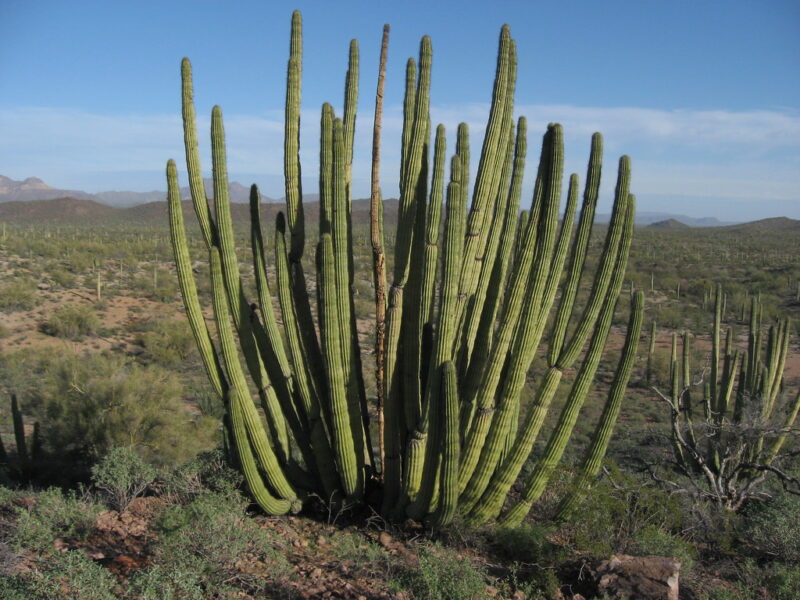
The Organ-Pipe Cactus, scientifically known as Stenocereus thurberi, derives its name from its tall, upright growth that resembles the pipes of an organ. It can reach heights of up to 20 feet and can have multiple arm-like growths extending upward. Native to the Sonoran Desert, this cactus sports a ribbed texture and features stunning, white tubular flowers that bloom at night.
To thrive, the Organ-Pipe Cactus requires full sunlight and well-draining soil. It is highly drought-resistant, making it an ideal choice for arid landscapes. Given that it is a slow-growing cactus, patience is required for it to reach its full potential height.
In its native habitat, the Organ-Pipe Cactus plays a crucial ecological role by providing nectar to local bats and moths. It’s a perfect addition to desert gardens, showcasing both resilience and beauty. With its tall stature and night-blooming flowers, it creates a dramatic visual impact during warmer months.
Queen of the Night (Selenicereus grandiflorus)
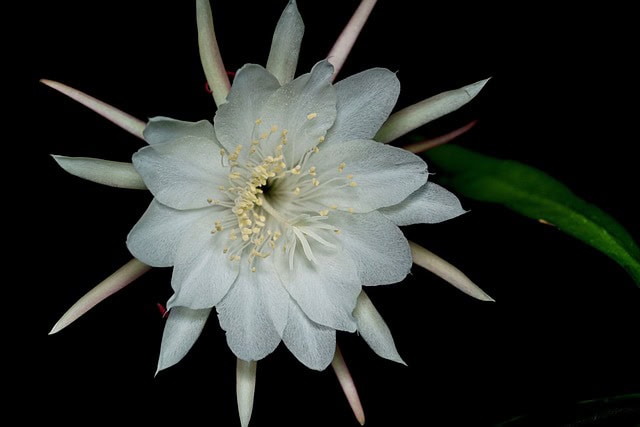
The Queen of the Night, or Selenicereus grandiflorus, is renowned for its stunning large, white flowers that bloom only at night. This epiphytic cactus can grow to impressive lengths and requires support structures for its sprawling growth. Its flowers are often described as fragrant and are a breathtaking sight for those fortunate enough to witness them.
Ideal conditions for the Queen of the Night include bright, filtered light and a well-draining, organic soil mix. Watering should be kept to a minimum, allowing the soil to dry between waterings. This cactus is generally forgiving for beginners, although it may take a few years before it begins blooming.
The infrequent spectacle of its night-blooming flowers symbolizes fleeting beauty and the awe of nature. This characteristic makes the Queen of the Night a sought-after centerpiece for collectors and enthusiasts who revel in the surprise of witnessing its elegant blooms.
Saguaro (Carnegiea gigantea)
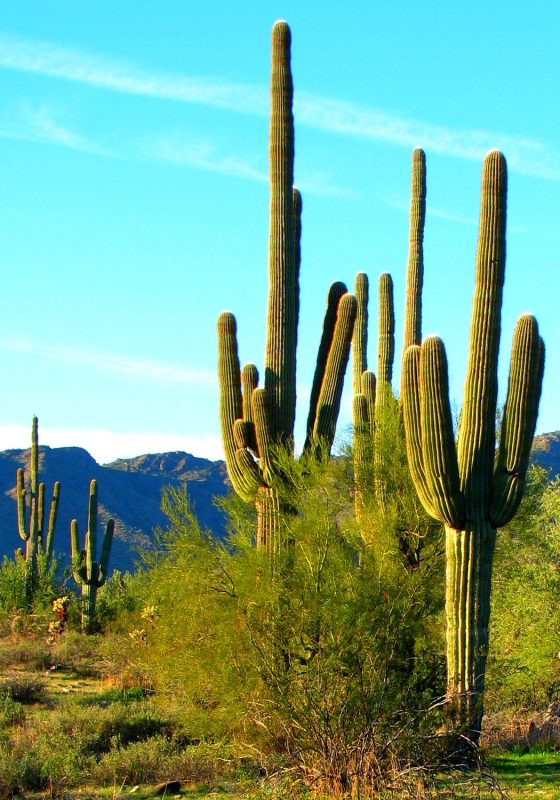
The Saguaro, or Carnegiea gigantea, is perhaps the most iconic succulent. Native to the Sonoran Desert, these colossal cacti can grow to be over 40 feet tall and live for more than 150 years. With their arm-like branches extending upward, they create striking silhouettes against the desert backdrop, and they can often be seen dotting the landscape of the American Southwest.
Saguaro cacti thrive in full sun and require well-draining soil. They’re highly drought-tolerant, storing water in their fleshy stems to endure long periods without rain. The Saguaro blossoms white flowers in the spring, and its fruit can be harvested in the summer, supporting local wildlife and humans alike.
A Saguaro represents endurance, adaptability, and the beauty of desert life. Its grandeur makes it a centerpiece for xeriscape gardens, celebrating the uniqueness of desert ecosystems while providing shade and shelter for local wildlife.
Snake Plant (Sansevieria trifasciata)
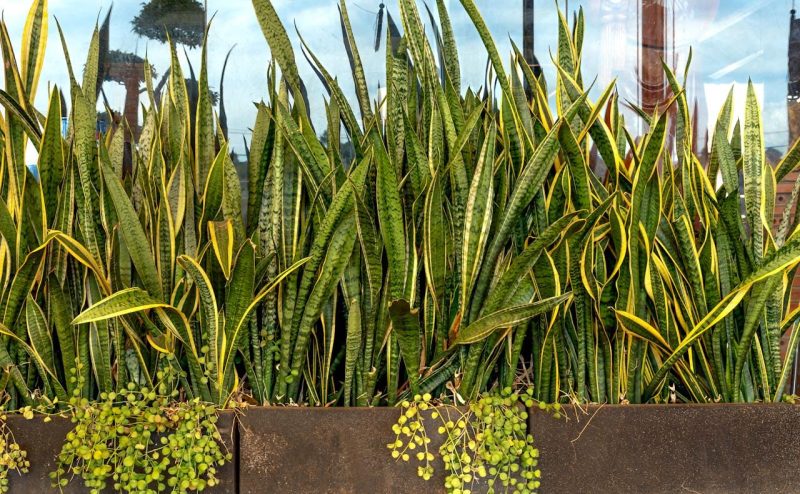
The Snake Plant, or Sansevieria trifasciata, is a largely popular succulent known for its architectural leaves that grow tall and upright, resembling snakes. This hardy plant can reach heights of up to four feet and is often used as a stylish houseplant.
Snake Plants thrive in various lighting conditions, from low light to bright indirect sunlight, making them incredibly adaptable. Their ability to tolerate neglect and infrequent watering has earned them a reputation as a low-maintenance houseplant. Allowing the soil to dry out completely between waterings is essential for its health.
Aside from aesthetics, the Snake Plant is known for its air-purifying qualities. It releases oxygen at night, making it an excellent choice for bedrooms. Its resilience, beauty, and air-cleaning properties make it a cherished addition to any indoor space.
Spineless Yucca (Yucca gigantea)
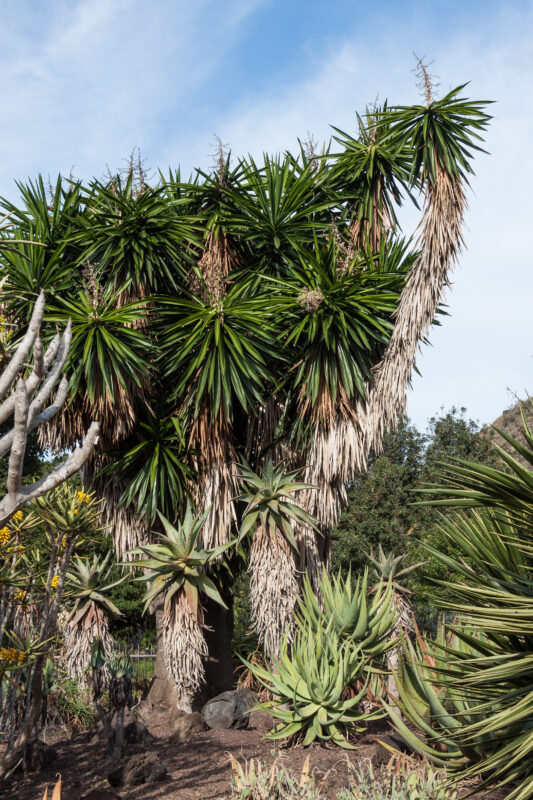
The Spineless Yucca, scientifically known as Yucca gigantea, is a large succulent that features striking rosettes of sword-like leaves. This plant can grow up to 20 feet tall and is often used as a specimen in gardens and landscape designs. Its narrow, spiky crown creates a dramatic look while maintaining a primitive elegance.
Spineless Yuccas grow best in full sunlight and require well-draining soil. They’re drought-tolerant, thriving in arid landscapes where other plants might struggle. Mature plants may produce tall flower stalks adorned with creamy white flowers, adding seasonal beauty to any garden.
With its interesting form and adaptability, the Spineless Yucca serves as both a sculptural element and a xerophytic choice for drought-tolerant gardening. Its striking presence can enhance contemporary and desert-themed landscapes alike.
Sticks on Fire (Euphorbia tirucalli)
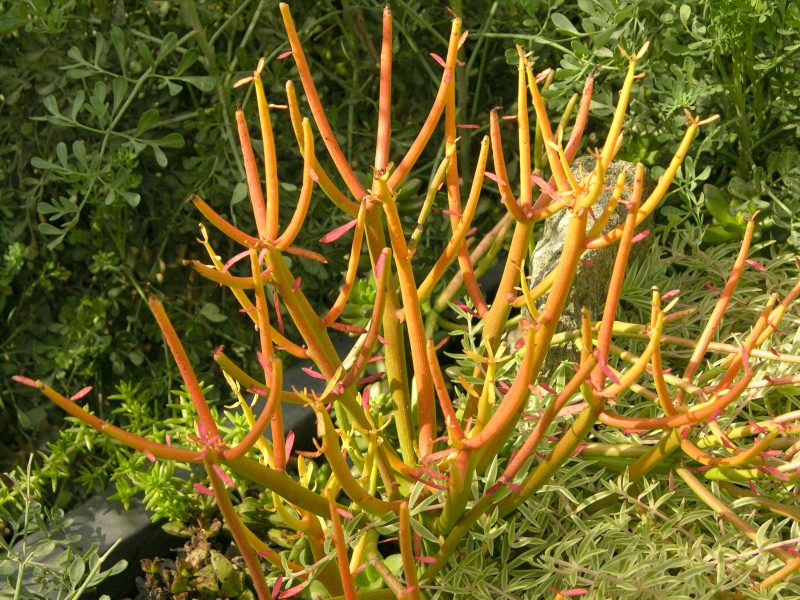
Sticks on Fire, known scientifically as Euphorbia tirucalli, is a captivating succulent that features slender, upright stems that take on a fiery hue in bright sunlight — hence its name. This unique plant can grow up to six feet tall, making it a standout choice in succulent gardens.
Caring for Sticks on Fire requires full sunlight and well-draining soil. This succulent is quite drought-tolerant, making it ideal for low-water gardens. Its unusual appearance and vibrant coloration create a dramatic focal point that brings energy and character to any landscape.
While the sap of the Sticks on Fire is toxic, it is also a unique addition to arrangements and landscapes, particularly in modern or contemporary designs. The vibrant stems can provide a stunning contrast against other succulents and flowers, making it a favorite among gardeners looking to make a statement.
Elephant Bush (Portulacaria afra)
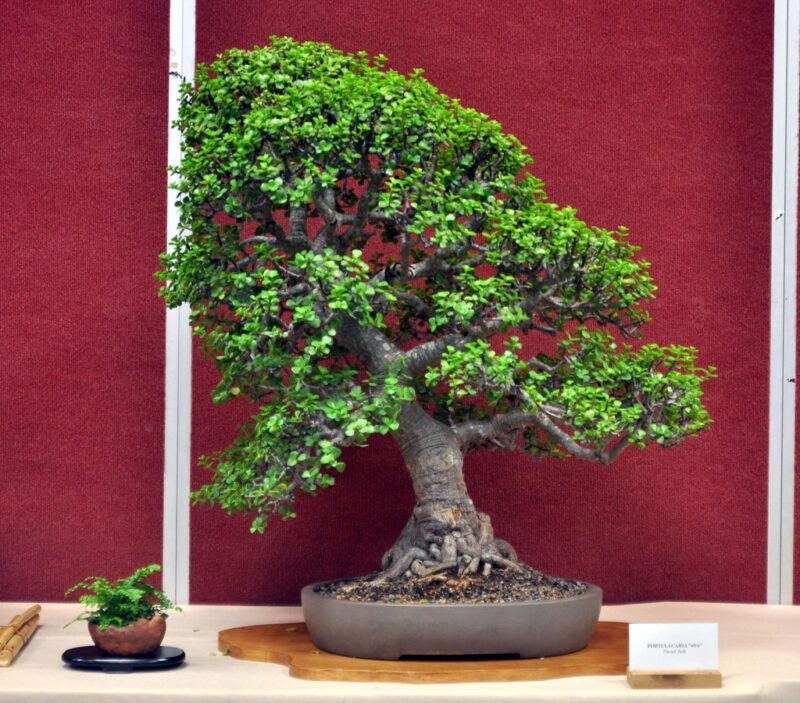
Portulacaria afra, commonly known as Elephant Bush, is a delightful succulent native to South Africa. Characterized by its thick, jade-like leaves and bushy growth habit, it can easily grow into a sizable shrub up to five feet tall and wide. The Elephant Bush is often used as a ground cover or in hanging baskets due to its cascading growth pattern.
This succulent is exceptionally easy to cultivate, requiring bright, indirect sunlight and infrequent watering. It stores moisture efficiently in its leaves, allowing it to thrive in dry conditions. Additionally, the Elephant Bush is a favorite among bonsai enthusiasts, as its pliable branches can be manipulated to create beautiful miniature trees.
Beyond its ornamental qualities, Elephant Bush is known to be highly beneficial to the environment. It plays a crucial role in carbon sequestration and is an excellent choice for those interested in sustainability. Its edible, succulent leaves are also enjoyed by tortoises and can be added to salads, making it a versatile addition to any garden.




